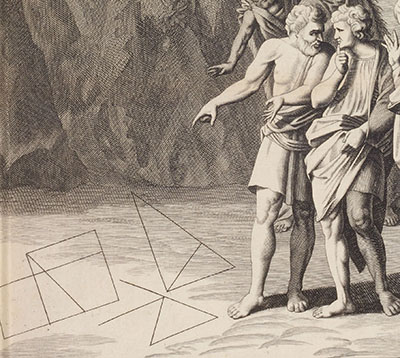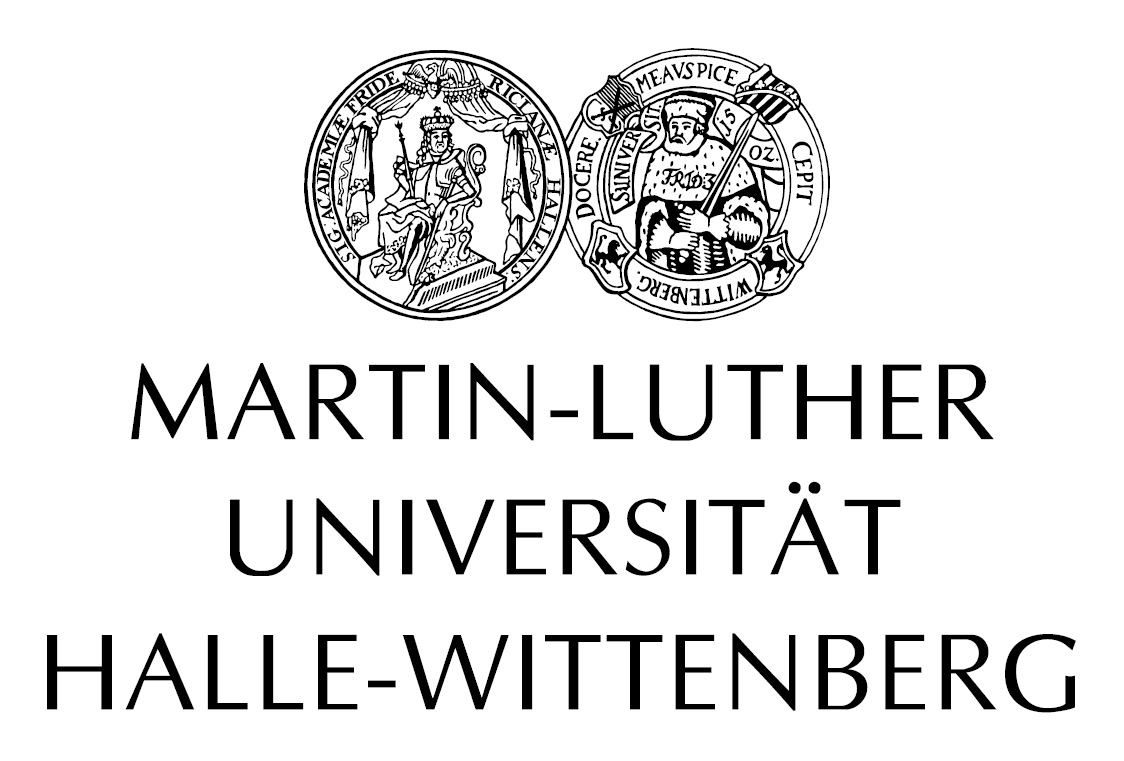Machine translation available:
Project of the Month: The Genetic Definition in the 17th and 18th century
Each month, we aim to feature a current research topic by a doctoral student or Early Career Researcher. This month, Theodor Berwe (IZEA/University of Mainz) talks about tracing the historical development of the genetic definition as an ideal form of forming concepts.
Since antiquity and until the 19th century, geometry has been considered a paragon of the potential of human knowledge. Geometry gives insight into the composition of the elements (Plato) or the structure of the cosmos (Kepler). It is an image of the divine creative power (Nicholas of Cusa). Viewed slightly more profanely, geometry’s appeal may lie in the promise [1] that with its help we can arrive at undoubtedly true statements about reality––independently of experience: The surface area of a rectangle is always equal to the product of its sides, regardless of whether it is a drawing on a blackboard, a construction sketch, or a parcel of farmland.
In the early modern period, the fascination with geometry manifests in the context of a discourse on the proper method of science. The axiomatic structure of geometry, in which propositions are derived from fixed principles, now becomes the ideal form of science in general and especially also of metaphysics. While in antiquity (e.g. in Euclid’s Elements) these principles consists of three different types––definitions, axioms, postulates––, in the early modern period, the focus shifts to the definitions alone. Definitions are supposed to stand at the beginning of geometry and any other science. On them rests the weight of the entire axiomatic system. This gives rise to a crucial methodological question: What do definitions look like that are suitable for this task? How can we define the basic concepts on which all scientific knowledge is built?

At first glance, the proponents of the geometric method (mos geometricus) in the 17th and 18th century are remarkably united in their response: As a prime example of a definition, we find again and again the definition of the circle as a movement of a line around a fixed center. This example can be found in Thomas Hobbes [2], Baruch de Spinoza [3], Gottfried Wilhelm Leibniz [4], among others. For this type of definition, the German philosopher Christian Wolff coins the term “genetic definition”. It is genetic insofar as it explains how the definiendum comes into existence.
However, the fact that everyone agrees on the prototypical example of the circle definition, says little when it comes to the question of what exactly makes this definition so special. Here the opinions diverge widely: In his materialist philosophy, Hobbes for example emphasizes the constructive nature of the genetic definition. Science in general consists of nothing else than the knowledge of effects that we can infer from causes or generations. For Spinoza, on the other hand, the genetic definition is associated with a special form of knowledge, which he calls intuition. A genetic definition enables us to grasp the thing defined in a single act of the intellect. Famously, in his Ethics he attempts a genetic definition of God. [5] For Leibniz and for Wolff, finally, the genetic definition is a real definition which means that it shows the possibility of the defined concept. By this means, they want to meet an objection of arbitrariness in the formation of concepts. Not every arbitrary combination of concepts may be possible (a biangle in plane geometry is allegedly not), but if a genetic definition can be given, the concept defined is unquestionably possible.
In my doctoral thesis, I trace the historical development of the genetic definition as an ideal form of forming concepts. I focus on the 17th and 18th century, beginning with Hobbes, who, according to my current knowledge, is the first modern philosopher to develop the idea of a genetic definition as a universal basis for science, and ending with Immanuel Kant, who, in the Critique of Pure Reason, claims that such a definition cannot be applied outside the realm of mathematics.
Thereby, I use the example of the genetic definition to examine how the understanding of geometry, metaphysics, and their relationship to each other changes over time. With the application of the geometrical method to metaphysics, a methodological reflection on the nature of geometrical knowledge begins. Although this reflection does not go so far as to doubt the certainty of geometry altogether, the question does arise: What is the peculiar nature of geometrical knowledge that assures its eminent certainty and evidence?
by Theodor Berwe (Bochum)
In January-March 2022, Theodor Berwe held a scholarship “Stipendium für Aufklärungsforschung” at the Interdisciplinary Center for European Enlightenment Studies (IZEA) in Halle, working on his thesis. From April he will be employed at the University of Mainz.
Notes
[1] In fact, this bold promise has turned out to be not entirely true. With the discovery that other, non-Euclidean geometries are possible in the 19th century, as well as Einstein’s discovery that space itself is non-Euclidean, the supposedly inseparable connection between (Euclidean) geometry and reality was torn.
[2] “How the knowledge of any effect may be gotten from the knowledge of the generation thereof, may easily be understood by the example of a circle … For let it be known that the figure was made by the circumduction of a body whereof one end remained immoved, and we may reason thus ; a body carried about, retaining always the same length, applies itself first to one radius, then to another, to a third, a fourth, and successively to all ; and, therefore, the same length, from the same point, toucheth the circumference in every part thereof, which is as much as to say, as all the radii are equal. We know, therefore, that from such generation proceeds a figure, from whose one middle point all the extreme points are reached unto by equal radii.” (De corpore, part I, 1.5).
[3] “If the thing is created, the definition, as we have said, will have to include the proximate cause. E.g., according to this law, a circle would have to be defined as follows: it is a figure that is described by any line of which one end is fixed and the other movable. This definition clearly includes the proximate cause.” (Tractatus de Intellectus Emendatione §96, II/35/12–16; trans. from Curley 1985)
[4] “But the concept of the circle set up by Euclid, that of a figure described by the motion of a straight line in a plane about a fixed end, affords a real definition, for such a figure is evidently possible. Hence it is useful to have definitions involving the generation of a thing, or if this is impossible, at least its constitution, that is, a method by which the thing appears to be producible or at least possible.” (De synthesi et analysi universali, in A VI, 4A, n. 129, p. 541; trans. from Loemker 1969)
[5] Spinoza emphasizes the analogy between the circle definition and the definition of God, which he develops in the first book of his Ethics, in a letter to Ehrenfried Walther von Tschirnhaus (ep. 60, 1675).
Bibliography
Spinoza, Baruch de, Tractatus de Intellectus Emendatione, in: The Collected Works of Spinoza, ed. and trans. by Edwin Curley, vol. I., Princeton, NJ: Princeton University Press, 1985, pp. 3–45.
Hobbes, Thomas, De Corpore, chapters 1–6, in: Computatio sive Logica: Part I of De Corpore, trans. by Aloysius Patrick Martinich, New York: Abaris Books, 1981.
Leibniz, Gottfried Wilhelm, De synthesi et analysi universali, in: Philosophical Papers and Letters, ed. and trans. by Leroy E. Loemker, 2nd ed., Dordrecht: D. Reidel, 1969, pp. 229–34


